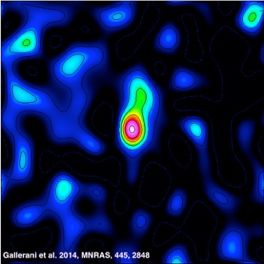QUESTING FOR BLACK HOLES IN THE EARLY UNIVERSE
Thu, 13/11/2014 - 10:22
Observations of the infant Universe have shown that the most distant galaxies discovered so far host black holes that are extremely massive, characterized by thousand of billions solar masses. These objects, known with the name of "quasars" are generally discovered through the intense X-ray radiation they emit. The mechanism responsible for the formation of these black holes is still not known. To unveil this mystery and fully understand their origin and evolution, it would be necessary to detect their lower mass ancestors. However, the early phase of a quasar life is characterized by the production of huge amounts of dust that absorbs X-ray radiation and thus hampers the detection of black holes.
RadioNet3: : http://www.radionet-eu.org/ »
»
|


